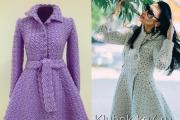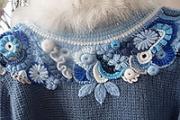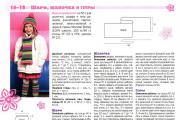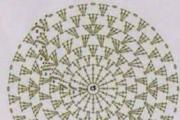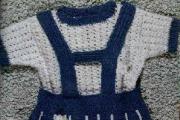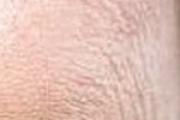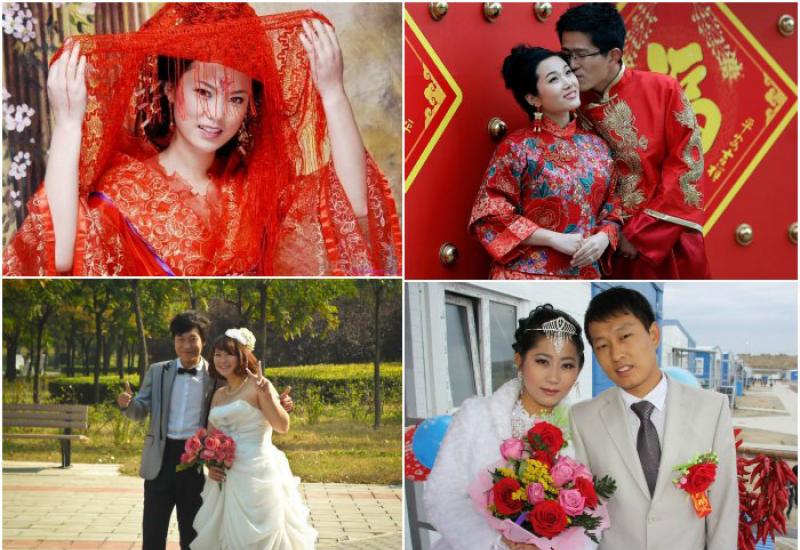How to knit leg warmers using black yarn. Knitted leg warmers for shoes: diagrams and description
The winter season is perhaps the best time to take the gaiters out of the closet drawer, wash them and put them on your child to keep him warm. Children's legwarmers are all the rage right now. At the same time, if you don’t find them in stores, you can knit them with knitting needles.
This won't be that difficult to do. A little perseverance with patience, mastery of needlework techniques - and the new thing is ready. We knit the product with knitting needles and also with crochet. Those needlewomen who are just mastering this art should choose the simplest patterns. Let's look at them in this article.

Initially, measurements should be taken from children. You can knit leg warmers not only on two, but also on five regular knitting needles. It is not so easy to say which method of doing work is simpler for a less experienced needlewoman.


In the case of two knitting needles, the fabric will need to be stitched. Another option will require the ability to correctly distribute stitches with knitting needles. Regardless of this, the following measurements are required:
- leg circumference under the knees;
- calf circumference;
- calf girth;
— distance from the knee to the middle part of the calf;
— the distance between the middle of the calf to the ankle;
- the length of the product itself.
Bright gaiters for cold weather over bootsYou can also knit on knitting needles without a pattern. If you have children's leg warmers that have a seam, then you need to make a pattern. Draw a small rectangle on a millimeter measure. The largest of its sides is equal to the length of the product.
The small one is identical to the calf girth. Position the figure vertically, this will make it easier for you to construct. Divide the two small sides in half and connect their middles with a line. Mark the vertical, marking the distance from the line above from the knee to the middle of the calf to the ankle.


Let's draw thin lines that will be parallel to the horizontal sides. After this, on the top line we lay off the half-circumference of the legs under the knee from the vertical in two directions, on the next line at the top - the circumference of the shin, on the bottom there should be the circumference of the ankle. Connect the ends of the lines on all sides with small curves.
At the bottom, be sure to draw a lapel in the shape of a rectangle or an increasing trapezoid.
In the first situation, the product will cover only the upper part of the shoe, in the other - a limited instep area. Ask your children which option they like best. With these knitting needles you can create different knitted items.


The most common pattern for knitting leg warmers, which is accessible even to the least experienced craftsman, is stocking stitch. Cast on 20 stitches, knit the first row, purl the next row. Count the number of loops for each centimeter horizontally, as well as the number of vertical rows. We determine exactly how many loops you need to cast on. Vertical counting helps to accurately calculate the order of decreasing or increasing the number of loops. Knitting will not be difficult for you.

Let's consider another knitting pattern for the product, which is distinguished by its simplicity.
- Try initially making knitted leg warmers for your child with a knitted seam. This is very simple, because you are making a fabric, which will then need to be knitted (sewn) together.
- For this purpose, cast on 50 stitches on knitting needles 4 mm thick.
- Of these, 110 rows should be knitted. They should all be completely identical. You need to alternate a couple of front turns with a pair of purl turns.
- We close the loops on the last row and wash the emerging panel. This must be done so that the knitted children's leg warmers do not begin to shrink over time.
- At the final stage, the panel needs to be sewn together. It is best to do the work with contrasting threads, and also embroider something along the seam. Some decorate this place with ribbons and bows. You can use matching threads - then the product will be practical, but at the same time quite modest.
Now the children's leg warmers are completely ready to wear. In general, such knitted products are very unpretentious to create. You can make them with the most ordinary knitting needles. We just knit as carefully as possible, because you are doing all this for children.
 Pink leg warmers with holes for girls
Pink leg warmers with holes for girls 






 Scheme of leggings with a relief pattern
Scheme of leggings with a relief pattern How to knit leg warmers yourself with knitting needles?
Initially, knitted leg warmers were part of sports uniforms. To this day they are used by football players and people doing aerobics. But over time, leg warmers began to be worn not only with sneakers, but also with high-heeled shoes. Leg warmers can be knitted tightly and keep the leg warm, or they can be made with openwork knitting and provide only an aesthetic appearance to their owner.
Where to start for beginners?
Before knitting leg warmers with knitting needles, it would be a good idea for beginners to understand what types of loops and patterns there can be and read the description. The simplest items can be knitted using purl and knit stitches. The knit stitches are knitted on the face, and the purl stitches are knitted on the wrong side. This will give you a simple one-sided canvas.
If you knit only knit stitches or only purl stitches, you will get a double-sided product. To knit something more complex, you need to know other knitting options. You can find information about knitting, tips, lessons, videos, and the alphabet in our corresponding section on the website.
 Knitting pattern for women's leg warmers "Owl"
Knitting pattern for women's leg warmers "Owl" This knitting is usually called garter stitch. A simple elastic band can be made by simply knitting the back and front sides in turn. It can be one knit, one purl, or two knits, two purls, etc. In order to secure the product, you will need to make an elastic band from the loose loops. It is called hollow.
Description of types of leggings

Leg warmers can be plain, multi-colored or knitted with some kind of pattern. Beginners are not advised to immediately knit complex patterns. Because it is easy to get confused in them, and if the knitting process has not yet developed, then the loops will be different in volume, this will be visible in the finished product. For example, leg warmers with braids will look very beautiful, but beginners should not try this design. But they will be quite capable of making stripes on the product. The finished product is usually crocheted.
Do not use yarn that is too thin or too thick for knitting leg warmers. Leg warmers made from thin yarn are very difficult to knit, but leg warmers made from thick yarn are uncomfortable to wear.
As a rule, for standard leg warmers, 48 stitches are cast on the knitting needles. But you can also use your own foot size as a guide.
How to take measurements? Description

Gaiters can be knitted with 2 or 5 knitting needles. It is difficult to say which method will be the most convenient. In the first option, the fabric will need to be sewn. And in the second case, the correct distribution of loops in a circle will be required. In any case, you will need to take measurements:
- leg volume under the knee;
- volume of caviar;
- shin volume;
- distance from knee to mid-calf;
- distance from the center of the calf to the ankle.
If you make leg warmers without a seam, then you will not need a pattern. If there is a seam, then a pattern will definitely be needed.
How to make a pattern? Description

Take graph paper and draw a rectangle on it. Its longest side will be the length of the product. The smaller one is the calf circumference width. Lay this rectangle vertically. The short sides will need to be divided in half. Connect their centers with one line. Now you will need to mark the vertical.
From the line above, mark the distances from the knee to the center of the calf and from the center of the calf to the ankle. Now it will be necessary to draw lines that will be parallel to the horizontal sides. On the line from above, place the half-girths of the leg under the knee on both sides. At the very bottom line it will be necessary to set aside the circumference of the ankle. Connect the ends of the lines on all sides using a smooth curve. At the bottom you will need to make a rectangle-shaped lapel. See the knitting description below.
Leg warmer knitting lesson for beginners
You will need:
- 2 skeins of yarn, preferably Galway;
- circular knitting needles No. 6;
- knitting marker.
The knitting density is 24 loops and 16 rows. Product length - 40.5 centimeters, width - 27.5. The diameter of the elastic band is approximately 13 centimeters.
Important note: the number of stitches you cast on must be a multiple of 4. So if you want to increase the width of the leg warmers, simply cast on more stitches on the needles in all rows by a number that is a multiple of 4.
Abbreviations to be used:
- l.p. - front loop;
- i.p. - purl loop.
Knitting pattern
1 round: 2 loops, knit behind the back wall of the loop, 1 loop;
2 circle: 2 l.p. together, yarn over, 1 l.p. 1 i.p.;
3 circle: 3 l.p., 1 i.p.;
4 round: 1 l.p., yarn over, slip two loops onto the knitting needle on the right, transfer them to the knitting needle on the left, knit together behind the back wall of the loop; 1 i.p.
Job description
You will need to cast on 48 stitches on the knitting needles, connect them in a circle, and put on a marker. Knit approximately 5 centimeters with an elastic band. Alternate 2 knit stitches and 2 purl stitches. Knit another 5-10 centimeters with knitting needles in the main pattern. Now start adding loops. On every fourth row, add a loop to the left and right. Repeat all this about 8 times.
The result should be 64 loops. Continue knitting the leg warmers with the main pattern. After 30 centimeters of the product is ready, you can begin to decrease the loops. To do this, in every second row you should remove a loop on the left and right.
This action must be repeated twice. You should have 60 loops. Tie the remaining 5-10 centimeters with an elastic band. Now fasten the loops, make a strong knot and cut the thread. You should have beautiful sports socks. Here they are:

What to wear with leg warmers?
There are many options here. They are very versatile, so they will look great with both a tracksuit and a classic one. Leg warmers will look quite fashionable in combination with jeans. They will also go well with a short skirt or shorts. Leg warmers can also be worn over shoes and boots.
Extravagant ladies can afford to wear leg warmers with sneakers. Leg warmers can be worn in any season. For the summer it is better to wear openwork light leg warmers; for winter, wool leg warmers with convex patterns are suitable, which will perfectly warm your legs.
In fashion boutiques, leg warmers will cost quite a lot, so why pay the extra money if you can knit this item of clothing yourself. With clear knitting patterns, this can be done in just a couple of days. All you need is a ball of thread, knitting needles and a hook, and a knitting pattern. Read the description carefully.
The winter season is perhaps the best time to take the gaiters out of the closet drawer, wash them and put them on your child to keep him warm. Children's legwarmers are all the rage right now. At the same time, if you don’t find them in stores, you can knit them with knitting needles.
This won't be that difficult to do. A little perseverance with patience, mastery of needlework techniques - and the new thing is ready. We knit the product with knitting needles and also with crochet. Those needlewomen who are just mastering this art should choose the simplest patterns. Let's look at them in this article.

Initially, measurements should be taken from children. You can knit leg warmers not only on two, but also on five regular knitting needles. It is not so easy to say which method of doing work is simpler for a less experienced needlewoman.

In the case of two knitting needles, the fabric will need to be stitched. Another option will require the ability to correctly distribute stitches with knitting needles. Regardless of this, the following measurements are required:
- leg circumference under the knees;
- calf circumference;
- calf girth;
— distance from the knee to the middle part of the calf;
— the distance between the middle of the calf to the ankle;
- the length of the product itself.
You can also knit on knitting needles without a pattern. If you have children's leg warmers that have a seam, then you need to make a pattern. Draw a small rectangle on a millimeter measure. The largest of its sides is equal to the length of the product.
The small one is identical to the calf girth. Position the figure vertically, this will make it easier for you to construct. Divide the two small sides in half and connect their middles with a line. Mark the vertical, marking the distance from the line above from the knee to the middle of the calf to the ankle.


Let's draw thin lines that will be parallel to the horizontal sides. After this, on the top line we set aside the half-circumferences of the legs under the knee from the vertical in two directions, on the next line at the top - the circumference of the shin, on the bottom there should be the circumference of the ankle. Connect the ends of the lines on all sides with small curves.
At the bottom, be sure to draw a lapel in the shape of a rectangle or an increasing trapezoid.
In the first situation, the product will cover only the upper part of the shoe, in the other - a limited instep area. Ask your children which option they like best. With these knitting needles you can create different knitted items.


The most common pattern for knitting leg warmers, which is accessible even to the least experienced craftsman, is stocking stitch. Cast on 20 stitches, knit the first row, purl the next row. Count the number of loops for each centimeter horizontally, as well as the number of vertical rows. We determine exactly how many loops you need to cast on. Vertical counting helps to accurately calculate the order of decreasing or increasing the number of loops. Knitting will not be difficult for you.

Let's consider another knitting pattern for the product, which is distinguished by its simplicity.
- Try initially making knitted leg warmers for your child with a knitted seam. This is very simple, because you are making a fabric, which will then need to be knitted (sewn) together.
- For this purpose, cast on 50 stitches on knitting needles 4 mm thick.
- Of these, 110 rows should be knitted. They should all be completely identical. You need to alternate a couple of front turns with a pair of purl turns.
- We close the loops on the last row and wash the emerging panel. This must be done so that the knitted children's leg warmers do not begin to shrink over time.
- At the final stage, the panel needs to be sewn together. It is best to do the work with contrasting threads, and also embroider something along the seam. Some decorate this place with ribbons and bows. You can use matching threads - then the product will be practical, but at the same time quite modest.
Now the children's leg warmers are completely ready to wear. In general, such knitted products are very unpretentious to create. You can make them with the most ordinary knitting needles. We just knit as carefully as possible, because you are doing all this for children.








Watch the video of knitting leg warmers:
Knitted leg warmers using knitting needles are a fashionable, modern accessory that can beneficially transform your leg. Today they are worn over shoes, so you can change your look with different models of leg warmers. It is not always possible to choose beautiful leg warmers to suit your leg shape, and they are not sold everywhere. Therefore, the optimal solution may be to make this item of clothing yourself.
Necessary equipment and materials for work
The first thing a beginning knitter faces is the problem of choosing a material. It is best to choose yarn made from natural fibers, such as natural angora. This material will look softer on the foot, in addition, it will retain heat. The choice of yarn color depends on the pattern and color of the shoe. You should not choose bright and light colors. Bright threads will distract all attention, and light-colored yarn will quickly get dirty. When knitting, you can use one color or several.
Having a lot of free time and desire, you can knit entire sets with knitting needles! Pay attention to the ones that will be a harmonious addition to your image.
Master class for beginners on knitted leg warmers

Cast on the same number of stitches as for knitting socks. They should fit snugly to the leg, but not tighten it. In order to prevent the leg warmers from moving with knitting needles, you need to knit 5-10 cm at the top and bottom with a classic 2 by 2 elastic band.
- So, we knit 10 cm of the upper elastic band. Then we knit one row with only facial loops. By the way, for convenience and the absence of a side seam, you can take circular knitting needles or replace them with 4 knitting needles for knitting socks.
- Now it's time to decide on the design of the product. The classic version is leg warmers, which are knitted in stocking stitch. A more sporty option is the double elastic pattern. For sophisticated natures, you can offer knitted leg warmers with an openwork pattern. True, in this case, they will not fit the leg, since the pattern gives them rigidity.
- When the issue with the pattern is resolved, it is necessary to knit a flat fabric half the height of the shin. Next, the loops begin to gradually decrease. True, in some cases you can knit straight leggings. For example, if your boots have a wide top. The decrease is made in every fourth row, every eighth loop.
- The decrease is continued for 5-10 cm. Then knitted straight until the length of the leggings is equal to the height of your product or shin. Then they move on to knitting elastic bands. The height of the bottom elastic band should completely correspond to the height of the elastic band at the top.
- Then all the loops are closed. The final touch is the processing of the upper and lower edges - they are crocheted in half-columns.


Openwork leg warmers with lacing for beginners in needlework

To knit such clothes you will need:
- Yarn (50% wool, 50% acrylic, 250 m/100 g) - 100 g blue, 50 g light blue.
- Knitting needles No. 2.5.
- Facial surface: faces. row - persons. p., out. rows - purl. p.
- Garter stitch: knit. row and purl. rows - all knit stitches.
- Basic pattern: knit according to the pattern. Knit the purl rows according to the yarn over pattern, knit purl. loops.
Let's look at the step-by-step progress of work
To begin, cast on 46 stitches on the needles and knit 6 rows in garter stitch. Next knit: 1 edge, 1 purl. p., 3 repeats of the main pattern, 1 purl. p., 1 chrome. Knit 100 rows in this way. Next, 2 rows with blue garter stitch thread, 2 rows with blue garter stitch thread, 2 rows with blue garter stitch thread, 4 rows with blue stockinette thread, 2 rows with blue garter stitch thread, 2 rows with blue garter stitch thread, 2 rows with blue garter stitch thread. Close the hinges.
Along the side edges, knit 1 row of double stitches (75 stitches), then knit according to the pattern. Use a blue thread to tie a 170 cm braid. Thread it crosswise into the resulting lacing holes in each or through one hole (see photo).
It’s not much more difficult to knit, as you can see for yourself.
Scheme:
Below you can watch video tutorials for better understanding. Enjoy watching!
Video tutorial for beginners
Be sure to watch this interesting video from professionals.
Gaiters are warm stockings without socks, an overlay on the boot made of dense material. At first they were made of leather and cloth, and now such products are knitted.
Leg warmers are popular right now.
You can decorate the leg warmers with a cord, pieces of fur, or an openwork border.

To knit leg warmers with knitting needles, we will need:
– black yarn Østlandsgarn (100% wool, 50 g = approx. 100 m.) – 150 g;
– stocking needles No. 4;
– hook number 3.
Knitting description:
1. Cast on 48 stitches and knit in the round for 100 rows with a 2 by 2 rib.
2. In the next row, switch to knitting with a hollow (double-sided) elastic band, while adding 12 loops, knitting them from broaches every 4 loops.
Tip: in the first row of hollow elastic, only knit stitches are knitted, so in order for the increases to be least noticeable, I recommend placing them in the places where the purl loop should be. For example, knit 1 knit stitch, remove 1 purl stitch without knitting (thread before the loop), 1 knit loop, then twist it from the broach, form a loop and put it on the right knitting needle (in the next row this loop will be knitted as a purl stitch). Then knit 1, slip 1, knit 1, slip 1, knit 1 and increase again from the broach. Alternate increases in 3 and 5 stitches until the end of the row.
3. Knit 12 rows with a hollow elastic band and close the loops with a needle.
4. Tie the lower edge of the leggings according to the following pattern:


Leg warmers with ornaments
You will need:
- DROPS ALASKA yarn:
- 50 g white (N2),
- 50 g gray (N40),
- 200 g light brown (N49);
- double-edged knitting needles 5 mm and 4 mm;
- knitting marker.
KNITTING DENSITY
(5 mm knitting needles) – 17 stitches and 22 rows in garter stitch = square with sides 10 x 10 cm.
Tip: add loops using a yarn over, knitting it from the wrong side behind the back wall of the loop.
DESCRIPTION OF THE WORK
- Knit on double-pointed needles in the round.
- Cast on 76 stitches on 4mm needles using gray thread.
- Knit the first round in garter stitch and secure with a marker.
- Take a light brown thread and knit with an elastic band (2 stitches, 2 stitches) 8 cm. Knit 1 row with garter stitch, simultaneously decreasing 16 loops (60 loops). Next, continue knitting on 5 mm needles. Work in garter stitch to create a pattern.

White yarn
Light brown yarn
Gray yarn
- After you knit the pattern once, change the thread to light brown.
- After 23 cm, decrease 1 stitch to the left and right of the marker. Repeat decreases 6 times, every 2.5 cm (48 stitches).
- After another 15 cm, take 4 mm knitting needles again. Knit row 1 in garter stitch, adding 12 stitches at the same time (60 stitches).
- Continue knitting with an elastic band (2 stitches, 2 stitches).
- After 41 cm from the start of work, decrease 1 loop in each pattern and continue knitting with an elastic band (2 stitches, 3 stitches).
- After 44 cm from the start of work, knit 1 circle in knit stitch, then bind off the loops.

The following leggings are decorated with an Aran pattern
The leg warmers are knitted.

Leg warmer length: 26 cm.
Design: Sylvia Jaeger
You will need
150 g brown melange yarn Schachenmayr SMC Viva Color (90% polyacrylic, 10% wool, 77 m/50 g).
Straight knitting needles; a set of stocking needles; auxiliary knitting needle.
2 buttons; 2 buttons.
Elastic band: alternately knit 1, purl 1.
Braid pattern: knit according to the pattern on which the faces are shown. and out. r. Repeat rapport loops. Repeat from 1st to 1st 2nd row.
Knitting density, braid pattern: 16 p. and 22 r. = 10 x 10 cm.
Job description
For the top edge, cast on 48 sts on stocking needles and knit in circular rows with a braid pattern, while knitting loops in even rows according to the pattern. 15 cm from the cast-on edge in each strip of 2 purl. add 1 p. = 54 p. After 26 cm from the cast-on edge, bind off all loops.
For the braid, cast on 9 sts on the knitting needles, knit 72 cm with an elastic band and bind off the loops. Cover the button with thread and sew it onto the braid. Sew a button onto the braid so that the braid can be fastened by wrapping it around your leg (see photo).
Knit leggings.
Knitting pattern and symbols:


They were originally used by dancers, gymnasts, acrobats and other athletes to quickly warm up their leg muscles during rehearsals and training.
Now such products are still used in sports, and are also common among lovers of active tourism, as they are worn over shoes and protect against dirt, debris and snow getting inside.
Gaiters with double Oran pattern
 |
 |
Openwork leggings
 |
 |
 |
 |
Leg warmers with braids

For knitting you will need: yarn “Podmoskovnaya” (50% wool, 50% acrylic, 250 m/100g) 200 g pink knitting needles No. 4. 

 |
 |
Leg warmers with double 3D pattern
Symbols for the diagram:
before work
at work , knit the next 3 loops, then 3 loops with aux. knitting needles)
or like this:
Symbols for the diagram:
knit in front rows, purl in purl rows.
Purl (purl - in front rows, front - in purl rows)
Cross 6 loops to the left (leave 3 loops on an auxiliary needle before work , knit the next 3 loops, then 3 loops with aux. knitting needles)
Cross 6 loops to the right (leave 3 loops on an auxiliary needle at work , knit the next 3 loops, then 3 loops with aux. knitting needles)

And many other options...
Some ideas for inspiration:






 |
 |
 |
 |


